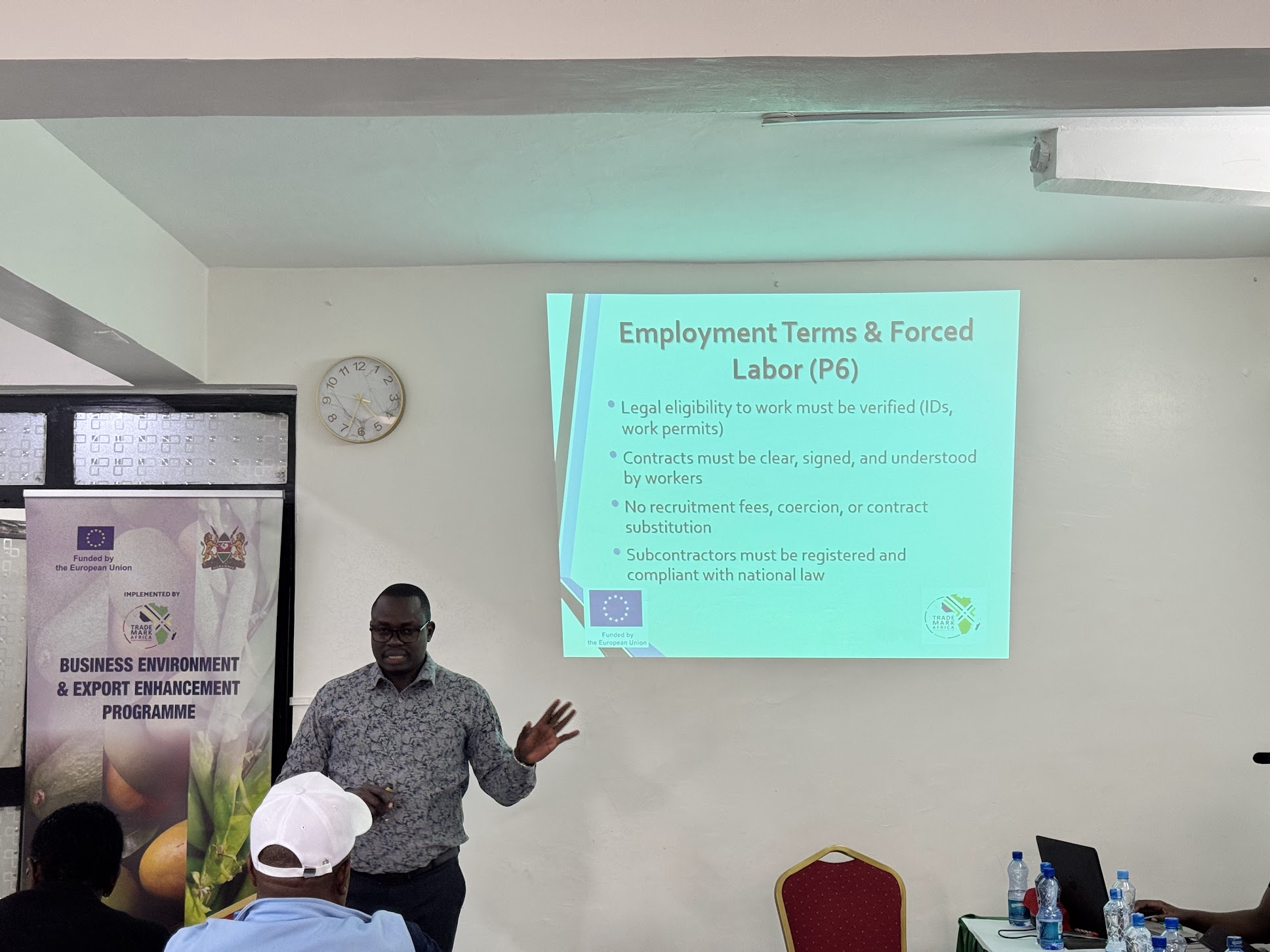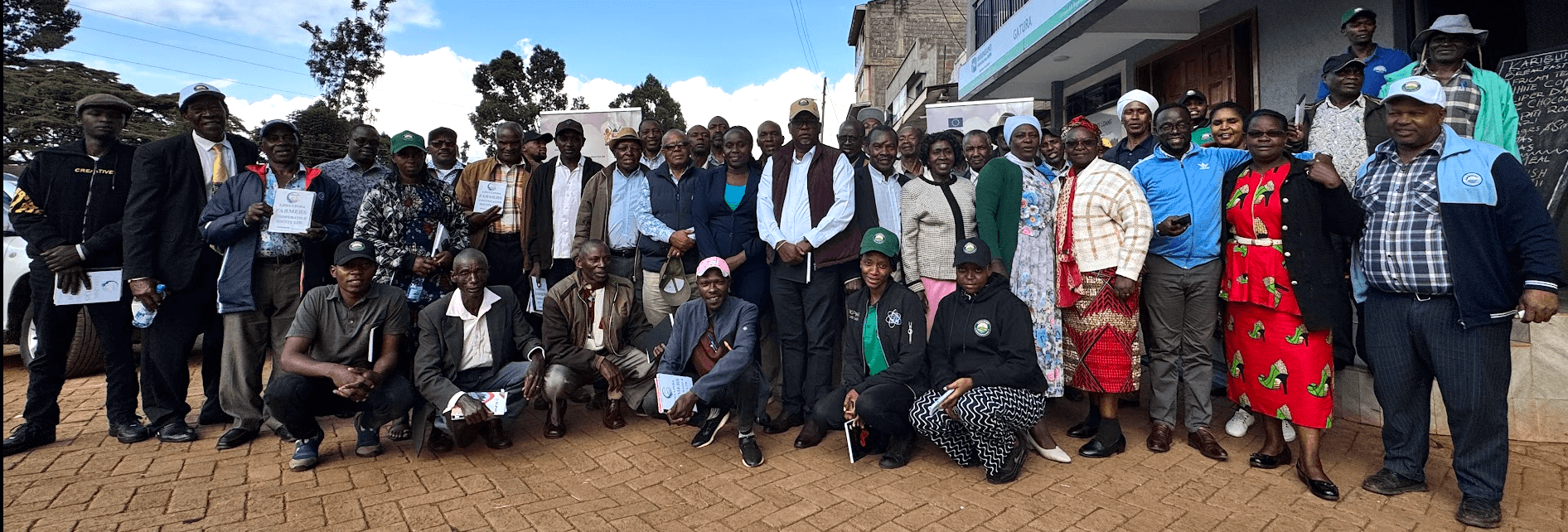Murang’a County, a significant avocado-producing region in Kenya, contributes 40% of the national output, valued at over $3.5 million. Most homes in the area have small orchards, which have become crucial for rural livelihoods. While cities like Madrid and Stockholm offer lucrative markets for avocados, Murang’a farmers, like others in Kenya, face barriers to entry. These include a lack of understanding of market requirements, international sanitary and phytosanitary (SPS) standards, food safety protocols, and labour conditions. Addressing these challenges requires training and collective effort.
Thousands of kilometres away, cities like Madrid and Stockholm represent some of the most lucrative markets for this green gold. But while demand is strong, access remains limited. The farmers of Murang’a, like many of their peers across Kenya, face persistent barriers to entry.
Chief among them is inadequate knowledge of market requirements, including compliance with international sanitary and phytosanitary (SPS) standards, food safety protocols, and labour conditions. Bridging this gap demands training, and collective resilience.

This was the reason over 60 members of the Lima Linda Cooperative, translated as “Farm and Protect”, assembled for a training session on GLOBALG.A.P. and GRASP protocols in early June 2025. Organised with support from TradeMark Africa (TMA) through the European Union- funded Business Environment and Export Enhancement Programme (BEEEP), the session focused on soil, water, and biodiversity protection, food safety, record keeping, and worker welfare. It marked the fifth group from the cooperative to undergo training since joining the programme in 2024, underscoring the consistency and commitment required for export certification.
John Mwangi Wanjeri, Chairperson of the Lima Linda Cooperative, explained that they joined the BEEEP programme in 2024 when their growth had stalled and support was much needed. The cooperative had around 200 members and eagerly embraced the opportunity provided by TradeMark Africa and the Fresh Produce Consortium of Kenya. Since then, the training has been applied on their farms, significantly increasing incomes through supplying EduFrugt Exporters, a connection made via the BEEEP programme. This has strengthened their bargaining power, and membership has since tripled, with the cooperative now seen as a model group in the county.
The results are evident. Farmers report improved soil health, reduced crop losses, and healthier trees due to organic practices. Trained sprayer service providers, many of them young people from the cooperative, have enhanced pest control and created new income streams in addition to avocado production. Record keeping has become a daily routine, payment systems are more transparent, and farm operations are more in line with certification requirements.
Collaboration with local administrators has also reduced theft, a common problem in the past. Night-time harvesting, once a major source of losses, has declined due to collective enforcement of harvest schedules and better coordination with chiefs and agricultural officers. Improved storage and pruning practices have increased yields and reduced post-harvest losses, enabling farmers to deliver more consistent volumes.
Still, the road is not without obstacles. The recent emergence of the Persea mites, Oligonychus perseae, a pest that feeds on avocado leaves, has raised fresh concerns. Many farmers are unfamiliar with the pest and struggle with early detection and effective control. Without
updated pest management protocols and consistent farmer-level monitoring, the risk of non- compliance with export standards increases significantly. These emerging threats highlight the importance of continued engagement between BEEEP and producers, and the need to adjust training schedules to meet evolving challenges on the ground.
Despite these obstacles, Lima Linda’s progress signifies a deeper transformation. Certification is now viewed as a viable strategy for long-term growth rather than a regulatory hurdle. Daily routines now incorporate standard operating procedures that meet global expectations. Practices once considered burdensome, such as traceability logs and environmental safeguards, are becoming second nature.

Looking ahead, the cooperative aims to develop a fully integrated rural value chain, from the orchard to the export dock. This includes not only production but also value addition, aggregation, cold storage, and transport. The ultimate goal is to create jobs, attract young people, and reduce reliance on middlemen, all while adhering to international market requirements.
Lima Linda’s story serves as a compelling case study of how global standards, when combined with targeted investment and community organisation, can foster local prosperity. In a world where compliance often dictates market access, this cooperative demonstrates that transformation begins at home.















